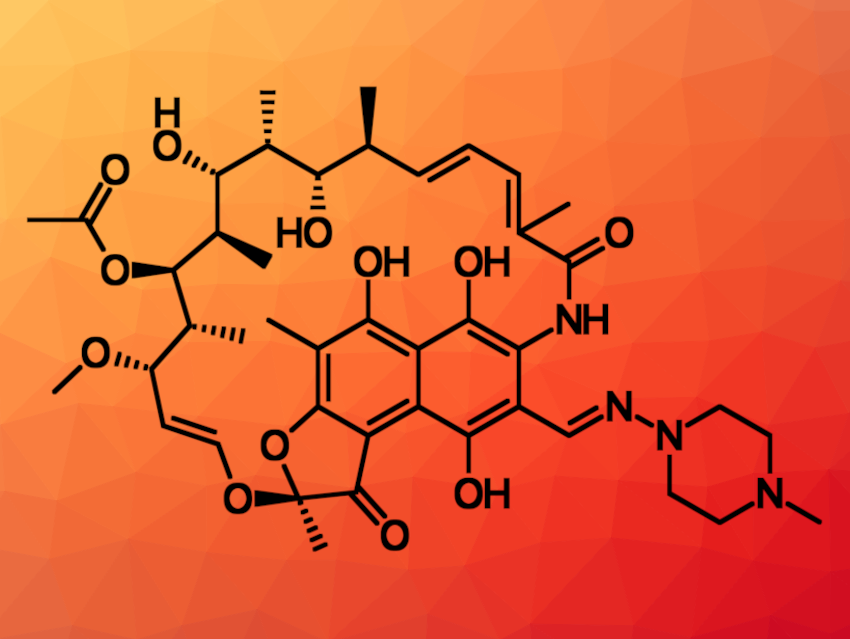Antibiotics are key for the treatment of infections. However, they also act as micropollutants, accumulating in rivers and wastewater. Even at low concentrations, antibiotic pollution may contribute to the problem of antibiotic resistance, a serious and widespread problem. Bioremediation is likely to play to be crucial in the future.
Paulo Durão, Universidade Nova de Lisboa, Oeiras, Portugal, and colleagues have developed an environmentally friendly two-step process to transform rifampicin (pictured), an important antibiotic used to treat tuberculosis, into non-antimicrobial compounds. The process involves an enzymatic oxidation step using the bacterial enzyme CotA-laccase and a hydrogen peroxide bleaching step. Laccases are multicopper proteins interesting for the biodegradation of antibiotics because they can catalyze the oxidation of a wide range of phenolic and aromatic substrates.
Rifampicin quinone was identified as the main product of the enzymatic oxidation. After the bleaching step with hydrogen peroxide, the final degradation products do not display antimicrobial properties, do not favor the selection of rifampicin-resistant strains, and are not toxic to the eukaryotic model organism C. elegans, which suggests that they could be environmentally safe.
According to the researchers, further work on the developed degradation approach should focus on the usability and immobilization of CotA-laccase, the assessment of the ability of this process to remove other antibiotics, and further characterization of the degradation products.
- Environmentally Friendly Degradation and Detoxification of Rifampicin by a Bacterial Laccase and Hydrogen Peroxide,
Paulo Durão, Peter Kis, Ivo M. Chelo, M. Rita Ventura, Lígia O. Martins,
ChemBioChem 2023.
https://doi.org/10.1002/cbic.202300627




